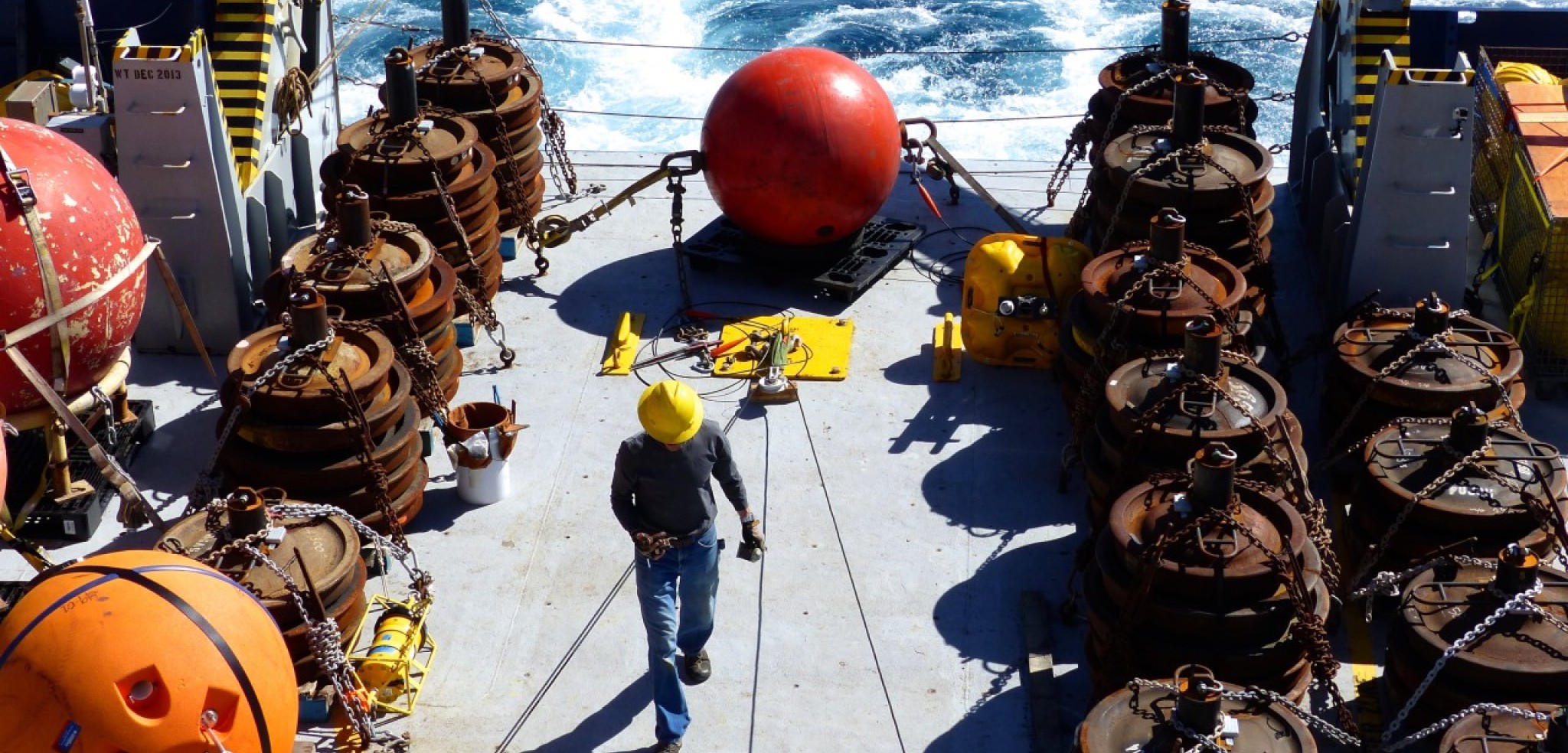Elusive Underwater Waves Hold An Uncertain Grip on the Climate
Scientists are braving the treacherous Tasman Sea to learn about internal waves.
Article body copy
On a polar expedition in 1893, Norwegian explorer Fridtjof Nansen experienced something strange. Sailing through the frigid waters north of Russia, Nansen’s ship had been cruising through calm seas when the ship’s forward progress suddenly stalled. Despite running the engine at full blast, the boat was barely moving. Nansen and his ship were stuck in a narrow fjord, trapped in a mysterious region of dead water.
Nansen and his colleague Vilhelm Bjerknes later identified the source of the drag: waves were stymieing the engine’s efforts. But these waves weren’t the familiar ones that ripple across the ocean’s surface. These waves undulated within the body of water, invisible to the eye. This unique interpretation set the stage for the discovery of what Swedish oceanographer Otto Pettersson later officially dubbed the “internal tide.”
Since then, oceanographers and climate scientists have learned much about internal waves (the “internal tide” being just one special, dramatic example of internal waves), including the realization that they play an essential role in ocean ecosystems and the climate.
These giant swells—most as tall as skyscrapers—tear through the world’s oceans. Yet a large internal wave’s biggest effect comes not from its journey, but from its death. When an internal wave breaks against an underwater landmass such as a continental slope, just as waves break on a beach, it violently mixes the warm upper layers of the ocean with the cold bottom layers. This mixing pulls heat and carbon dioxide down to the ocean’s depths, and cycles nutrients back up toward the surface.
Unlike upwelling sites or currents, which meander back and forth over months or years, internal waves are relatively fast, sometimes traveling hundreds of kilometers in just a few days.
“They’re pretty dramatic to imagine,” says Jennifer MacKinnon, an oceanographer at Scripps Institution of Oceanography.
A variety of forces can trigger internal waves. In Nansen’s case, energy created by his own ship is thought to have spawned the waves that left him stuck. But most internal waves, and especially the biggest ones, are caused by the tide. As the ocean sloshes back and forth with the tide, water in the deep parts of the ocean sometimes encounters a steep hill or mountain range. Forced to flow up and over these obstacles, the water tumbles over itself—a disturbance that sometimes grows into a massive internal wave.
Yet despite their century-long scientific legacy, and their climatological importance, internal waves are still shrouded in mystery.
“Nobody has ever studied the breaking,” says Jonathan Nash, an oceanographer at Oregon State University. How much energy these waves release when they break, and where that energy goes, is unknown. As a result, climate scientists struggle to represent internal wave breaking in their models.
Computer climate simulations are designed to reproduce the complexity of the planet, but the models (and hence their forecasts for the future) are all a little bit different. “[T]here’s a range between them,” says MacKinnon. One of “the difference[s] between those climate models is that they have different guesses for the rate of mixing in the ocean interior.”
Simply put, climate models don’t account for what happens when an internal wave breaks. And a gap in the data going in to a climate model makes predictions of the future less precise. So Nash, MacKinnon, and a multinational team of oceanographers have been working to plug that internal wave-sized hole.
Earlier this year, a few dozen scientists loaded hundreds of instruments and thousands of pounds of gear onto the R/V Roger Revelle and steamed into the choppy waters between Australia and New Zealand.
The Tasman Sea, a difficult stretch of ocean that’s churned by the notorious “Roaring Forties,” is home to a special stream of internal waves that routinely rip across the sea floor and slam into the Tasmanian continental shelf. “It’s this focused beam,” says MacKinnon. “It’s a nice laboratory to understand a fundamental process which is happening everywhere in the ocean.”
From their floating laboratory the team used cranes to dip thousands of kilograms of equipment down to the sea floor and back up again, over and over—a carefully calibrated scientific yo-yo on a cord thousands of meters long. They anchored sensor-laden cables to the bottom of the ocean, with giant buoys stretching them up toward the surface.
The team spent three months gathering data on the rolling Tasman Sea: all of this effort to achieve the seemingly simple task of measuring the temperature, salinity, and density of the water—observations that let them calculate the size and speed of the internal waves that stream from New Zealand to Tasmania.
Now the researchers are back on shore and are beginning to crunch the data that will, hopefully, tell them something new about internal waves. The implications of the research are potentially big, says Thomas Peacock, a mechanical engineer at the Massachusetts Institute of Technology who is not involved with the work.
“Actively modeling ocean circulation and global climate is one of the most pressing scientific problems of our time,” says Peacock. “The knowledge that we gain from these experiments, which is then used for these models, certainly can have important results for global scale climate modeling.”
MacKinnon hopes to present the experiment’s preliminary results at a climate meeting this fall. She says climate modelers could start working with the data “soon.” How soon? Within the next few years, she says. It may seem a long time to wait, but with more than 120 years of internal waves’ enduring mystery behind us, what’s a few more?

